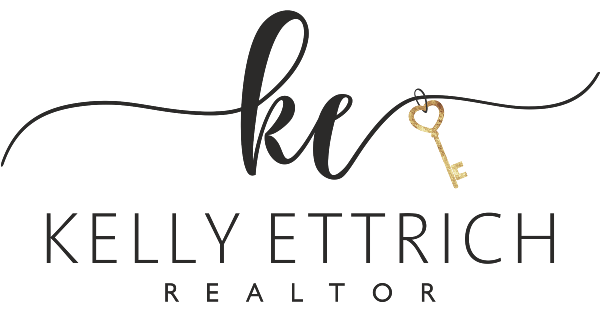What To Expect On Home Closing Day
Closing is when the ownership of the home officially transfers from the seller to you. You’ll sign a lot of paperwork, including the mortgage agreement, and pay your down payment and closing costs. Once all the documents are signed, and payments are made, you’ll receive the keys to your new home!
Buying a home is an exciting process, especially for the first time. It involves several steps, from initial consultation and securing mortgage pre-approval to closing the deal and moving into your new home. Working with a seasoned realtor like Kelly Ettrich can make this journey smooth and efficient. Kelly can provide valuable insights and expert guidance and help you negotiate the best possible deal. This starts with looking for a new home, and at the end of the line, the buyer is scheduled to finalize the contract on home “closing day.”
Closing day:
Closing is when the ownership of the home officially transfers from the seller to you. You’ll sign a lot of paperwork, including the mortgage agreement, and pay your down payment and closing costs. Once all the documents are signed, and payments are made, you’ll receive the keys to your new home!
Check out this video on closing day! ?
The following guide outlines a series of repeatable steps to ensure you successfully navigate buying your dream home in Northern Virginia while selling your current home. These steps are designed to provide a clear understanding of the home buying and selling process and help you make informed decisions along the way.
Let’s go over the steps in more detail:
Offer acceptance and contract signing:
The contract, also known as a purchase agreement, outlines the specifics of the deal: the purchase price, the amount of earnest money to be deposited, the closing date (usually 30-60 days after the contract is signed), contingencies such as financing and inspections, any items to be included in the sale, and other vital details. Both parties must agree to the terms and sign the document for it to become legally binding.
Earnest money deposit:
The earnest money deposit shows the seller you’re serious about the purchase. If you back out of the deal for a reason not stipulated in the contract, the seller typically gets to keep this money. If the sale goes through, the earnest money is applied toward your down payment or closing costs.
Mortgage application:
You’ll provide financial documentation to your lender, such as pay stubs, tax returns, and bank statements. Your lender will also check your credit score. The goal is to secure preliminary approval for a mortgage, which gives you an idea of how much you can borrow. Once you have a contract, the lender will move toward final approval.
Check out this video below?
And also, this video on ensuring you take proper steps when applying for a mortgage?
The following guide outlines a series of repeatable steps to ensure you successfully navigate buying your dream home in Northern Virginia while selling your current home. These steps are designed to provide a clear understanding of the home buying and selling process and help you make informed decisions along the way.
Let’s go over the steps in more detail:
Offer acceptance and contract signing:
The contract, also known as a purchase agreement, outlines the specifics of the deal: the purchase price, the amount of earnest money to be deposited, the closing date (usually 30-60 days after the contract is signed), contingencies such as financing and inspections, any items to be included in the sale, and other vital details. Both parties must agree to the terms and sign the document for it to become legally binding.
Earnest money deposit:
The earnest money deposit shows the seller you’re serious about the purchase. If you back out of the deal for a reason not stipulated in the contract, the seller typically gets to keep this money. If the sale goes through, the earnest money is applied toward your down payment or closing costs.
Mortgage application:
You’ll provide financial documentation to your lender, such as pay stubs, tax returns, and bank statements. Your lender will also check your credit score. The goal is to secure preliminary approval for a mortgage, which gives you an idea of how much you can borrow. Once you have a contract, the lender will move toward final approval.
Check out this video below?
And also, this video on ensuring you take proper steps when applying for a mortgage?
Home inspection:
A home inspection is crucial because it uncovers hidden issues with the home, like structural problems or outdated systems. You can use this information to negotiate for repairs or a lower price or in some cases, to back out of the deal entirely.
Check out this video below?
Appraisal:
The appraisal protects you and the lender by ensuring the home is worth the purchase price. If the appraisal comes in low, you may need to make up the difference in cash, negotiate a lower price, or cancel the contract.
Check out this video below?
Title search and insurance:
The title search protects you from inheriting any liens or legal issues. Title insurance protects you from any future claims against the property. The cost of title insurance can vary, but it’s typically a small percentage of the home’s price.
Final loan approval:
Once all the information has been verified and the property appraised, the lender will issue a final approval or “clear to close.” This means they’re willing to provide the mortgage you’ve applied for.
Closing disclosure:
This important document outlines the final terms of your loan and what you’ll need to pay at closing. It includes your loan amount, interest rate, monthly payment, and a detailed breakdown of your closing costs. You should compare it to your initial loan estimate to ensure no discrepancies.
Final walkthrough:
This event is your last chance to make sure the property is in the agreed-upon condition. Check that all repairs have been made, that no new issues have arisen, and that all included items remain. If you find problems, you may need to delay closing to resolve them.
Home Closing Day:
Closing is when the ownership of the home officially transfers from the seller to you. You’ll sign a lot of paperwork, including the mortgage agreement, and pay your down payment and closing costs. Once all the documents are signed, and payments are made, you’ll receive the keys to your new home!
Remember that every home buying and selling experience is unique, so that the steps may vary slightly based on your situation. Kelly will be there to guide you through the process and answer any questions you have.






